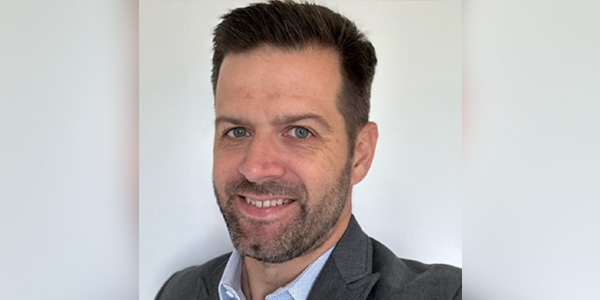Employee burnout is one of the greatest challenges facing the U.S. economy to the tune of $300 billion each year, according to the American Institute of Stress. Its studies show that a near majority, fully 83%, of U.S. workers suffer from work-related stress, with over half (60%) of worker absences directly related to that stress. Not only is this a significant drain on resources that drives avoidable opportunity loss, it’s also a major contributor to both mental and physical health problems of valuable employees.
Today’s employers need not knowingly or unconsciously undermine their own productivity and profitability. While any number of interventions can address and resolve the employee burnout epidemic, one solution is within earshot … literally: active listening.
Promote modern management
Today’s modern management must take a top-down approach to support staffers, and not just hear what is being said but rather actively listen to it. For one, a Harvard Business Review study found that active listening is a key factor in improving leadership effectiveness, which, in turn, improves employee productivity, engagement and retention.1 Conversely, failing to do so presents a mission-critical missed opportunity to address, and resolve, root causes of workforce stress and burnout.
With employee burnout so widespread, aptly addressing the issue can seem daunting for managers. However, the overwhelm of the issue can apparently be mitigated with a clarified understanding of common challenges that cause, and exacerbate, employee burnout. According to Adi Segal, CEO of Hapi.com, below are five red flags that can readily be identified and resolved through active listening.
Social isolation
When employees feel isolated, their emotional state is compromised and they are more likely to experience anxiety, stress and burnout — factors that can erode and impair a company’s growth. The work from home culture has only exacerbated the issue. In fact, Airbnb’s CEO recently warned that “the most dangerous part of remote work isn’t lost productivity — it’s loneliness.”
Active listening can help leaders identify employees who are struggling with this issue and take concerted steps to help them feel more connected to a manager and the team at large. Knowing that you “belong,” feeling that you are an important “part of something,” and understanding that your contributions are valued can produce a powerful and positive mindset.
Relationship issues
Whether with respect to friends, colleagues, family or a significant other, relationship problems can cause significant pain, trauma and strain that promotes burnout. By actively listening to employees, leaders can identify these kinds of issues and take proactive measures to address them before they become major problems — for the worker, department and the company overall.
Mentorship deficits
Mentoring is an essential part of career development, but it can be challenging to navigate for both mentors and mentees. Many companies today are stretched thin and workdays are overwhelmed with tasks and to-do’s that make “free time” elusive if not seemingly impossible. Even so, it’s imperative for leaders to engage in active listening moments to help identify these guidance gaps and provide the necessary support, direction, assessment and praise to keep staffers on the right track.
Socioeconomic and financial strife
Often, an employee pool represents a variety of socioeconomic factors and income levels. No matter one’s real or self-perceived stature or actual salary, everyone is at risk of struggling culturally and economically. Active listening can be a profound form of activism, with one report underscoring the extent to which active listening can offer much-needed support to help people deal with intense and distressing emotions in relation to these particular issues that fundamentally impact nearly every aspect of our work, home and social lives.2
Sub-par problem-solving
It would be an understatement to say that problem-solving is a critical capability to uphold in the workplace. In fact, problem-solving skills were cited as the most important soft skill of 2022 with fully 86% of employers reportedly seeking this attribute on student resumes, according to the National Association of Colleges and Employers Job Outlook 2022 survey.3,4
Given this vital skill is hampered by communication breakdowns, active listening can help leaders identify these shortfalls, and bridge those gaps by providing the necessary understanding, explanation, support and guidance to ensure everyone is on the same page.
According to Segal, “Even the most significant issues individuals, families and organizations face can be resolved with active listening, which needs to be more deeply embedded into our society — especially as most facets of our professional and personal lives move at lightning speed. Relative to corporate culture, better listening training is a quick and tactical way to demonstratively and quantifiably improve company culture, increase staff retention, and boost the bottom line.”
Immediately accessible solutions
Addressing employee burnout and related productivity pitfalls need not be rocket science, according to Segal. There are numerous tactical strategies to start addressing the issue right now, including:
• Practice makes perfect: As with any skill, listening ability is correlated with frequency of use. Like working a muscle, it will get stronger over time. Similarly, leaders should regularly schedule and conduct sessions with their employees to actually practice “the art of listening” rather than just “hearing what someone said.” People must embrace the notion that listening is not just a concept, but rather something that requires intention and action.
• Train your team: There are numerous emotional intelligence and active listening courses leaders can provide individuals or their entire team. Just as states mandate harassment training, business executives should make listening certification an important part of their own, and their team’s, professional development. Go a step further and make it a prerequisite or requirement for the job. If and when needed, expert trainers can be engaged to run active listening exercises, either in-person or virtually. Such professional resources can help expedite the key learning needed to put this skill into meaningful practice and start positively impacting people and the business’ bottom line.
Recommend resources
Analysis by NSC and NORC at University of Chicago reveals organizations that support mental health see a return of $4 for every dollar invested.5 They’ve built a Mental Health Cost Calculator that can demonstrate and quantify the financial impact on your own company.
Also notable is research making abundantly clear that talking to strangers can supercharge happiness.6 With the advent of Certified Listening as a Service (CLaaS), managers can promote mental health apps and resources that increase access to care and human connectivity with 24/7/365 availability, lower the bar to entry, and simply provide a safe space for team members (from the c-suite to the front line) to vent, relieve stress, get advice, bounce ideas or just have company when feeling lonely or isolated. Such access anywhere, at any time platforms can be a boon for employee retention, recruitment and organizational transitions.
“Many psychologists even admit that, often, people dealing with work and life issues don’t need therapy, but rather they just need someone to talk to,” Segal says. “Someone who will truly listen and provide the space for support, validation and exploration.”
Organizationally, leaders need to establish and build upon a culture of engagement, collaboration and trust. The kind that can only be compelled through true active listening so that employees feel heard, valued and supported in a way that impedes burnout. In turn, business and industry will realize an array of benefits, from increased productivity and higher staff retention rates to lower absenteeism and presenteeism exemplified by the “quiet quitting” trend.
Employee angst, stress and burnout is a significant business problem, and one highly viable — and relatively immediate — solution lies in the simple, yet impactful, act of active listening. By committing to this learned and nuanced skill, leaders can readily address the root causes of these issues and ultimately facilitate a potent culture of caring. Executives will quickly see the ripple effects as these improvements drive employee satisfaction and revenue growth.
Sources:
1 https://hbr.org/2016/07/what-great-listeners-actually-do
2 https://www.wholepersonintegration.com
3 https://www.theforage.com
4 https://www.naceweb.org
5 https://news.uchicago.edu
6 https://www.chicagobooth.edu
Merilee Kern, MBA, is a brand strategist and analyst who reports on industry change makers, movers, shakers and innovators, field experts and thought leaders, brands, products, services, destinations, and events. Kern is also founder, executive editor and producer of The Luxe List and host of the Savvy Ventures business TV show that airs nationally on FOX Business TV and Bloomberg TV and the Savvy Living lifestyle TV show airing in top U.S. markets. Connect with her at www.TheLuxeList.com and www.SavvyLiving.tv.














